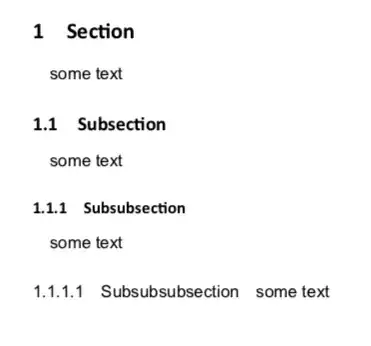After some research, here is my solution to the problem.
Below is part of the org-latex-classes code:
\\usepackage{titlesec}
\\usepackage{titling}
\\usepackage{fontspec} % packages for title and section-heading font setting.
% Set Header and Numbering Depth
\\setcounter{tocdepth}{5}
\\setcounter{secnumdepth}{5}
% Set formats for each heading level. 'sffamily' will point to the sans-serif font. In this case, 「楷體」.
\\titleformat*{\\section}{\\fontsize{20}{22}\\bfseries\\sffamily}
\\titleformat*{\\subsection}{\\fontsize{18}{20}\\bfseries\\sffamily}
\\titleformat*{\\subsubsection}{\\fontsize{16}{18}\\bfseries\\sffamily}
% The `titlesec` package is used over here to make use of `\\paragraph` and `\\subparagraph` as headings. Up to five levels of headings can be implemented this way.
\\titleformat{\\paragraph}
{\\fontsize{14}{16}\\bfseries\\sffamily}{\\theparagraph}{1em}{}
% New line after heading. (`\\paragraph` and `\\subparagraph` would not automatically generate a new line after the heading text. )
\\titlespacing*{\\paragraph}{\\parindent}{3.25ex plus 1ex minus .2ex}{.75ex plus .1ex}
\\titleformat{\\subparagraph}
{\\fontsize{12}{14}\\bfseries\\sffamily}{\\thesubparagraph}{1em}{}
\\titlespacing*{\\subparagraph}{\\parindent}{3.25ex plus 1ex minus .2ex}{.75ex plus .1ex}
This lies right at the end of org-latex-classes to implement all 5 levels of subheadings:
("\\section{%s}" . "\\section*{%s}")
("\\subsection{%s}" . "\\subsection*{%s}")
("\\subsubsection{%s}" . "\\subsubsection*{%s}")
("\\paragraph{%s}" . "\\paragraph*{%s}")
("\\subparagraph{%s}" . "\\subparagraph*{%s}")
